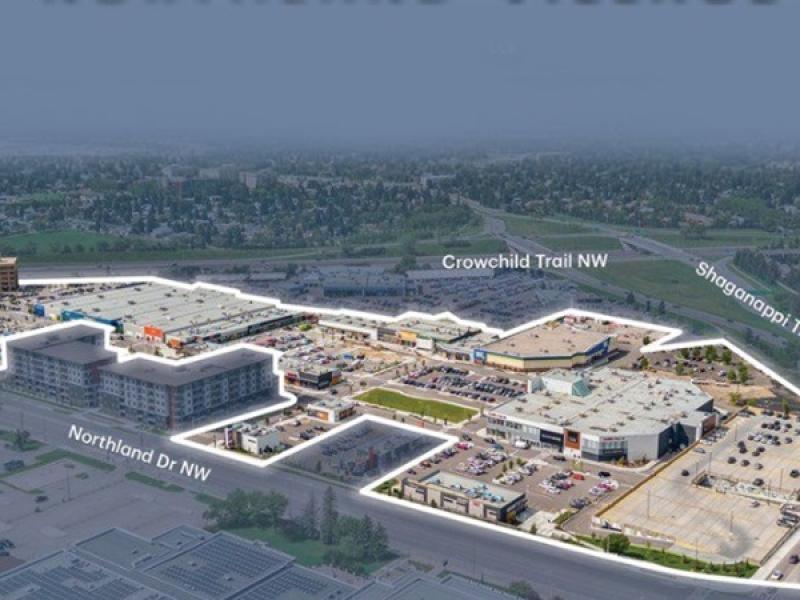
GUEST SUBMISSION: Calgary and Edmonton saw tremendous rental growth over the past three years. In 2024 alone, the multifamily sector in Alberta was setting new records.
This rise in demand for rental housing was largely driven by our stable employment sector, lack of provincial rental caps, high volumes of migration especially as Ontario and B.C. struggled with affordability challenges, liquidity and favourable financing terms.
Notable urban developments we saw accelerate during this boom included:
- the West District, a master-planned, mixed-use community on the west side of Calgary with a highly amenitized and accessible public realm with bike paths, large sidewalks and a central park;
- as well as the University District, an inner-city location centred around the University of Calgary and a major hospital, that is being transformed into a walkable new neighbourhood with a retail main street, and diverse mix of multifamily housing products on leased university land.
However, like many Canadian cities, the favourable conditions which led to a construction boom of purpose-built rentals in Calgary and Edmonton has now led to a well-supplied multifamily housing market. Vacancy rates are now trending upwards, while rental rates have stabilized and, in some cases, softened.
Calgary faces a rental adjustment with the upper end of the market feeling the most pressure. Landlords are working hard to hold rents, but incentives remain common.
In Edmonton, rents for existing assets are flat to trending higher, although performance is submarket specific. New suburban projects are leasing well while downtown projects exhibit higher vacancy and more challenging absorption.
A shift from quantity to quality and a more balanced market
Faced with this new reality, developers are rethinking their strategies. They might not embark on building the same kind of projects as they did before, or at the same pace, with multiple projects at once.
In addition, while CMHC financial backing remains critical, rising premiums and credit tightening is having further impact on development sentiment. Across both cities, developers are tailoring strategies to their specific assets while their focus remains on reducing turnover and achieving pro forma rents.
Overall, the tightening of high leverage debt combined with changing market fundamentals will help curb some of the rising supply of multifamily housing in Alberta, leading to a more balanced market in the medium term. Vacancy rates will likely continue to tick upward further stabilizing at or above the five per cent mark, and rental rates will likely remain muted until the market balances in around 2026 or 2027.
Not surprising, some softening is probably welcomed by Alberta residents to alleviate rent pressures imposed by such strong demand over the past few years. Ultimately, the consumer is showing signs their focus is cost above all else.
Aligning project and portfolio needs with new financing strategies
At First National we are helping developers and investors navigate this market shift with a variety of financial strategies. Developers are increasingly seeking conventional financing for construction while CMHC continues to be the best solution for permanent/take-out financing.
In other cases, a combination of a CMHC-insured construction mortgage and second conventional mortgage is warranted in cases where rental achievement holdback is required by CMHC. A key part of these strategies is assessing different programs that align with client’s current and future goals keeping in mind their liquidity, exposure and pipeline to minimize risk.
It's also important to align risk perspectives and expectations of CMHC program changes on new developments. Since November 2024, CMHC has required more upfront capital making it more challenging for developers to secure desirable, high-leverage financing for new projects.
Moreover, as of July 2025, mortgage insurance premiums rose once again making some projects less viable and desirable from an investment return perspective. Fortunately, the local market is adjusting, with developers becoming more cautious during their project’s design and development phase, looking at how they can build with potentially less leverage.
For example, we recently worked with a well-established developer in Calgary’s University District to secure CMHC-insured construction financing as a backstop for the conventional facility. However given the new restrictions, the client opted for a high-leverage conventional land loan to facilitate the closing of the land lease, then conventional financing for construction so the project can move forward with certainty and without delay.
Eventually, the CMHC-insured construction loan will replace the current conventional facility.
Opportunities to build still on the horizon
So, while debt costs are rising and leverage is negatively impacted, certainty of execution can still be achieved, just in different ways.
We are starting to see developers scale back on the sheer number of planned projects, but this is likely to be a moderate scale back. Construction costs have stabilized, Calgary and Edmonton are still relatively affordable compared to other major municipalities in Canada, and high-quality locations with communities that have amenities and are walkable will still be in demand for multifamily renters.
Development is a complicated process, and it can take years to move through all financing phases even in good cycles.
Different financing strategies can be applied at different phases of the project to maximize speed of execution while minimizing risk. As market continues to evolve, no doubt we will learn and adjust with new and improved financing, design, construction and market offerings for Alberta’s growing multifamily housing landscape.








